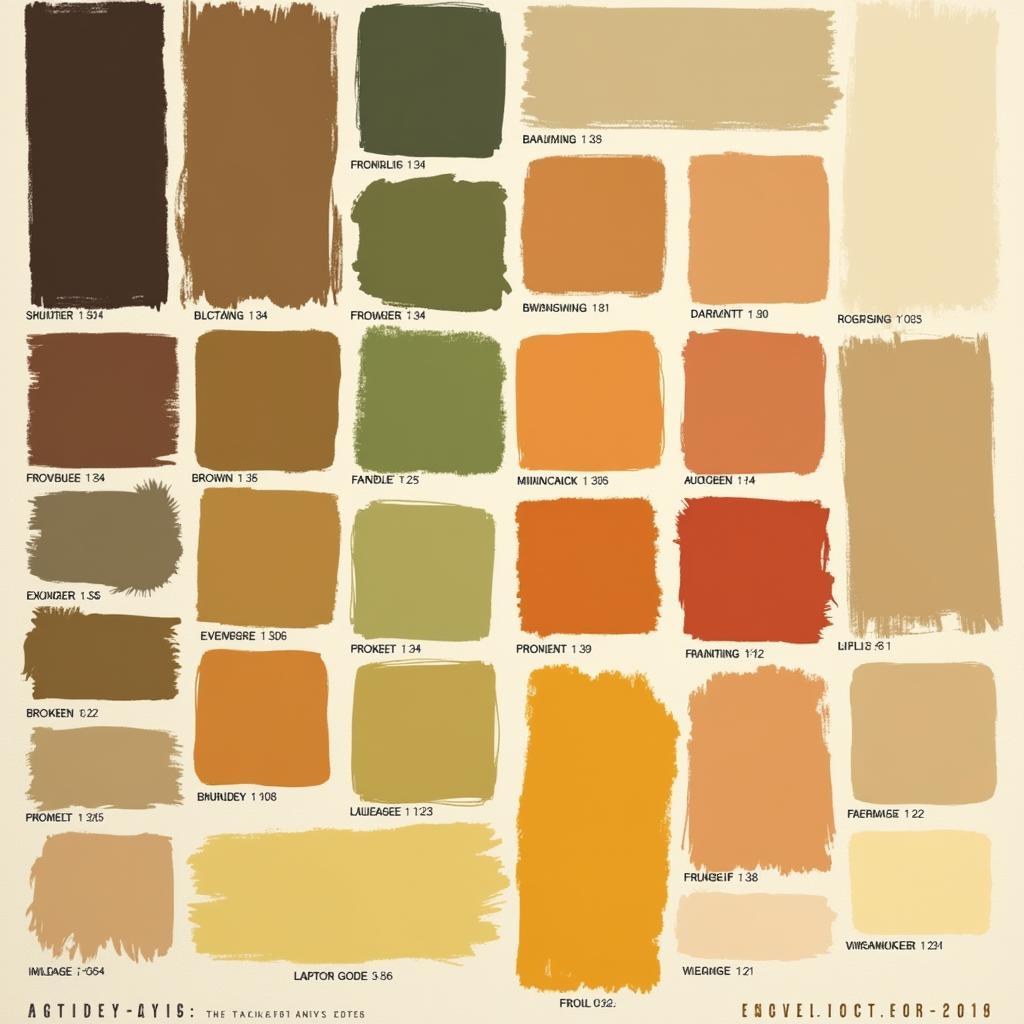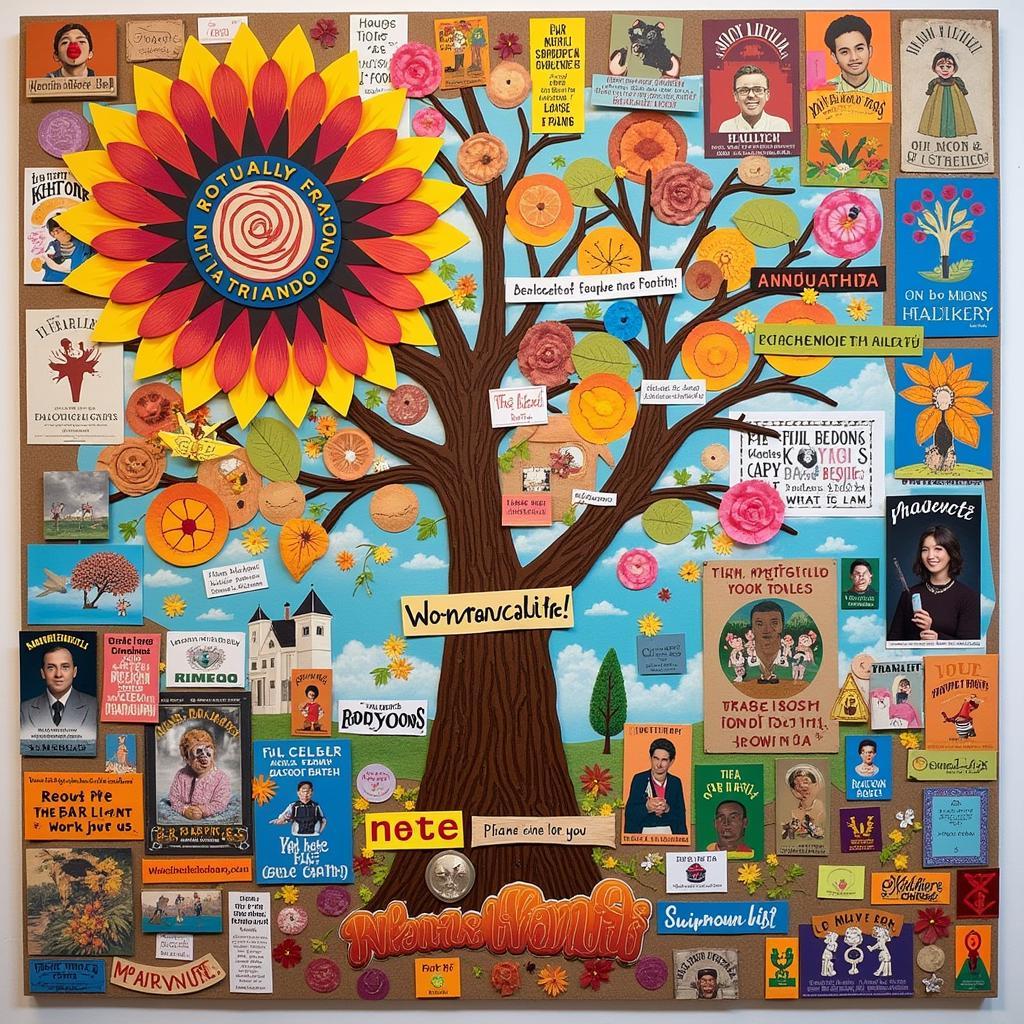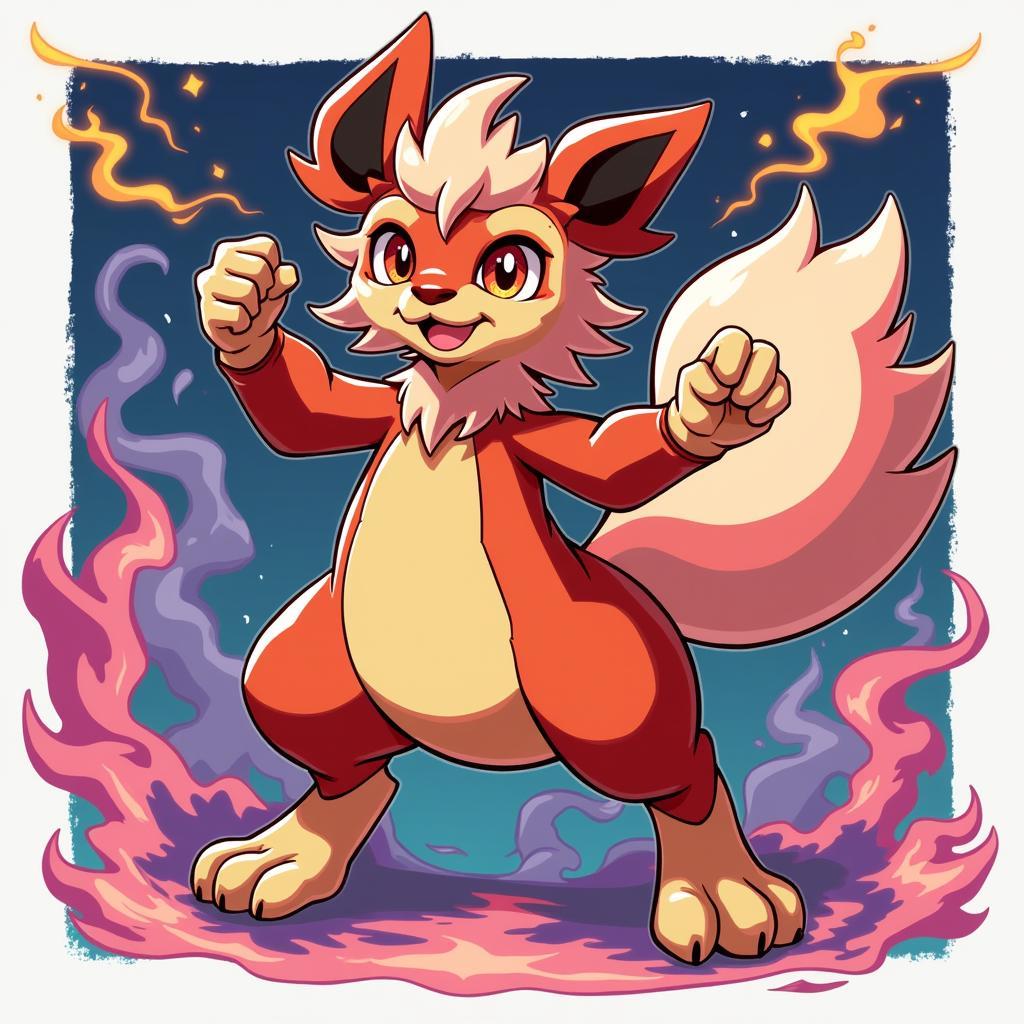Exploring the Vibrant World of Indigenous Amazonian Art
Indigenous Amazonian Art offers a captivating glimpse into the rich cultural heritage and spiritual beliefs of the diverse communities thriving within the Amazon rainforest. From intricate pottery and vibrant textiles to powerful masks and mesmerizing body painting, these art forms are not merely decorative; they are living expressions of a profound connection to nature and the cosmos. Let’s delve into this fascinating world and uncover the stories woven into every creation.
Unmasking the Symbolism: A Deep Dive into Indigenous Amazonian Art
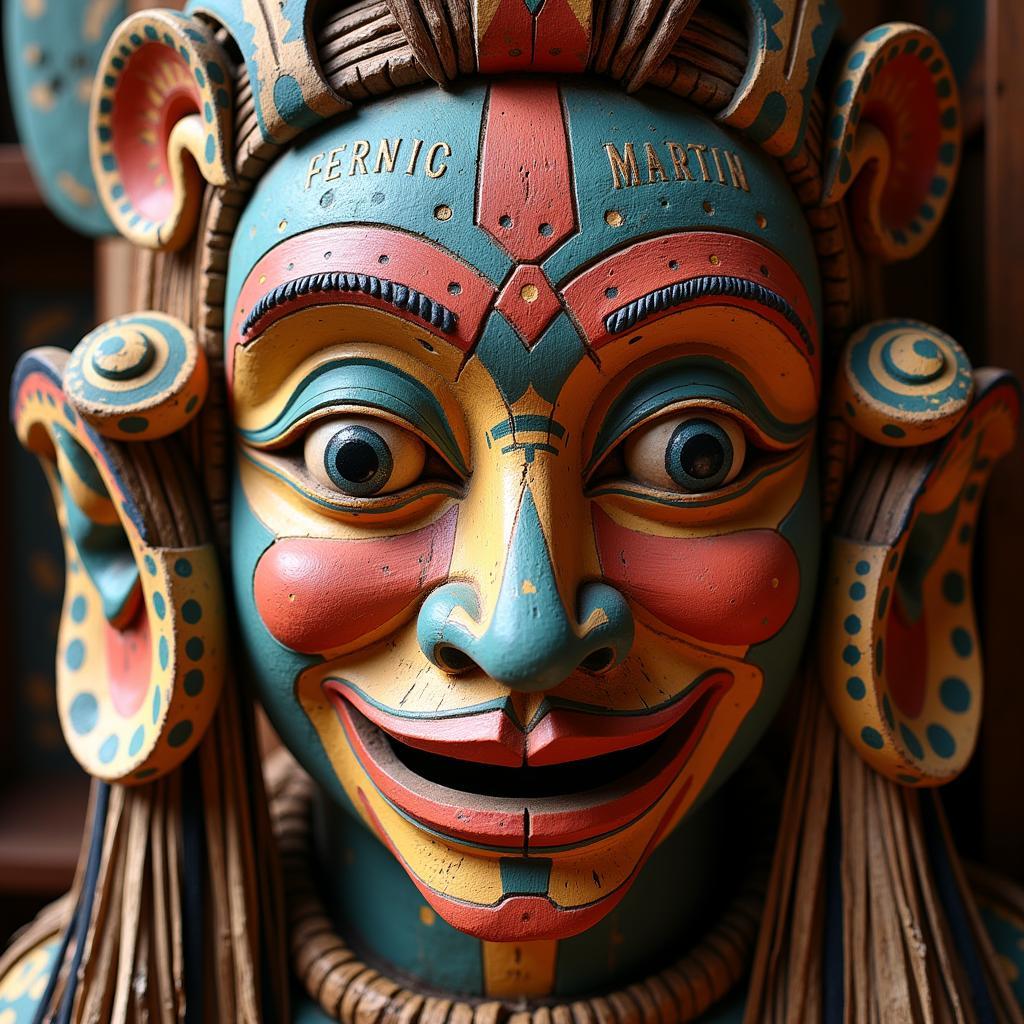 Indigenous Amazonian mask used in ceremonial rituals
Indigenous Amazonian mask used in ceremonial rituals
Shipibo art, for example, is renowned for its intricate geometric patterns, often referred to as “kené.” These mesmerizing designs, believed to be inspired by visions experienced during Ayahuasca ceremonies, represent the interconnectedness of all living things. Similarly, the intricate body paintings of various Amazonian tribes utilize natural dyes and pigments to create striking visual narratives that reflect their unique cosmologies.
From Clay to Canvas: The Diverse Materials of Amazonian Artists
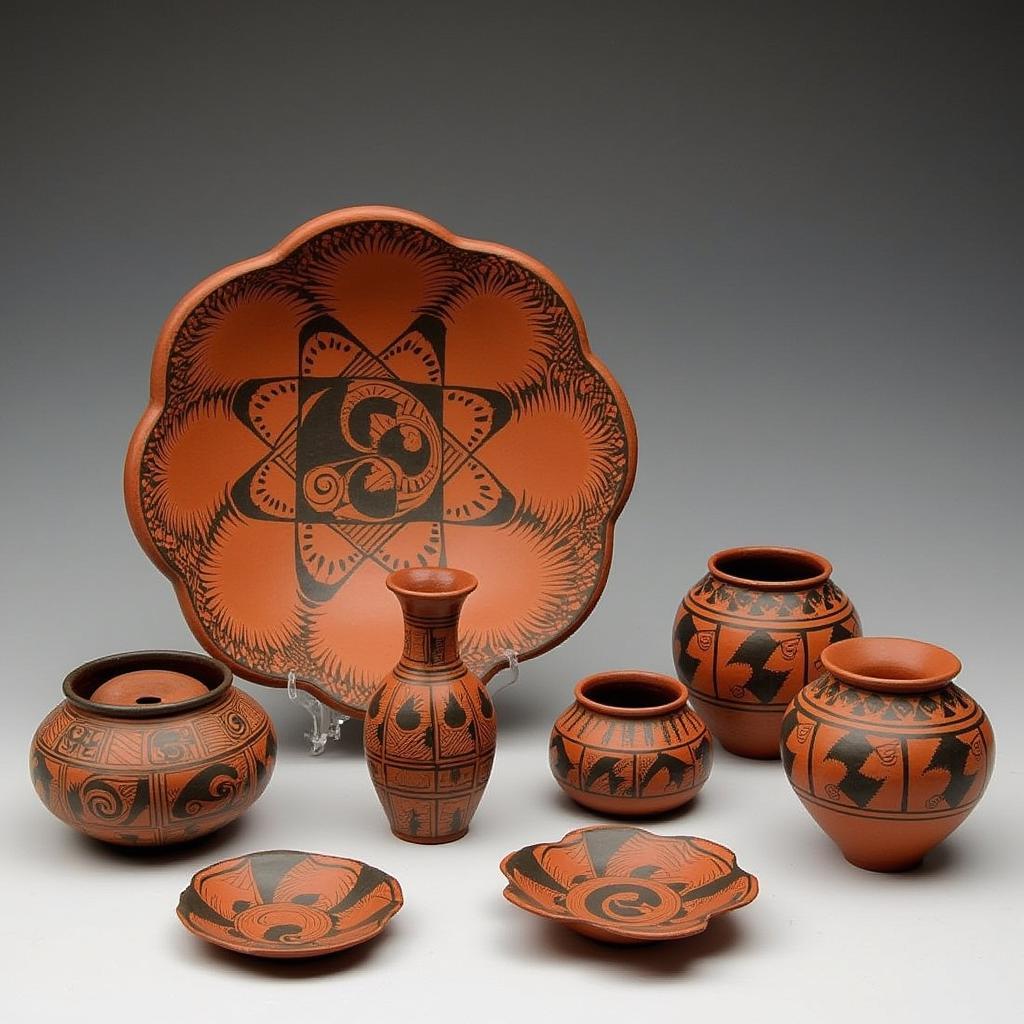 Traditional Amazonian pottery with intricate designs
Traditional Amazonian pottery with intricate designs
The materials used in indigenous Amazonian art are as diverse as the tribes themselves. Clay, wood, fibers, feathers, seeds, and natural pigments are all skillfully employed to create objects of both practical and ceremonial significance. The process of creating these artworks is often imbued with ritualistic meaning, further strengthening the connection between the artist, the community, and the spiritual world. This deep connection resonates through each piece, telling stories of ancestry, beliefs, and the delicate balance between humanity and nature.
Preserving Traditions: The Importance of Supporting Indigenous Amazonian Art
The survival of these unique art forms is essential for the preservation of indigenous cultures in the face of increasing globalization and environmental pressures. Supporting indigenous artists not only ensures the continuation of their traditions but also empowers them to maintain their cultural identity and share their stories with the world. It provides a platform for their voices to be heard and their heritage to be celebrated.
shipibo art embodies this resilience and artistic richness.
What are the Most Common Motifs in Indigenous Amazonian Art?
Common motifs often depict animals, particularly jaguars, anacondas, and monkeys, which hold symbolic significance within Amazonian cosmologies. Geometric patterns, representing the interconnectedness of life, and stylized representations of spirits and deities are also frequently seen.
How is Indigenous Amazonian Art Used in Rituals and Ceremonies?
Amazonian art plays a vital role in various rituals and ceremonies. Masks, costumes, and body paintings transform individuals into spirits and deities, facilitating communication with the spiritual realm. Ceremonial objects, such as decorated pottery and intricately carved staffs, are also used to invoke powerful energies and connect with ancestral spirits.
Who are Some Notable Contemporary Indigenous Amazonian Artists?
While many artists remain anonymous, working within their communities, some contemporary artists have gained international recognition for their work. Researching specific tribes and their artistic practices can lead to the discovery of individual artists and their unique stories.
Indigenous Amazonian Art: A Legacy for Future Generations
arte indigenista offers further exploration of this rich artistic tradition.
Indigenous Amazonian art is a powerful testament to the resilience and creativity of the Amazonian peoples. By understanding and appreciating these extraordinary art forms, we can gain a deeper appreciation for the diverse cultures that call the Amazon rainforest home and contribute to their ongoing preservation. Supporting indigenous artists ensures that these vital traditions continue to thrive, enriching the world with their beauty and profound meaning.
FAQ:
- What is the significance of geometric patterns in indigenous Amazonian art?
- How are natural pigments made for use in Amazonian art?
- What are some of the challenges faced by indigenous Amazonian artists today?
- How can I support indigenous Amazonian artists and their communities?
- Where can I learn more about specific Amazonian tribes and their art forms?
- What is the role of shamanism in inspiring Amazonian art?
- How does Amazonian art reflect the relationship between humans and nature?
Need more support? Contact us:
- Phone: 02462573573
- Email: danteum@gmail.com
- Address: Savico Megamall, 7-9 Đ. Nguyễn Văn Linh, Gia Thụy, Long Biên, Hà Nội 10000, Việt Nam.
We have a 24/7 customer service team.
